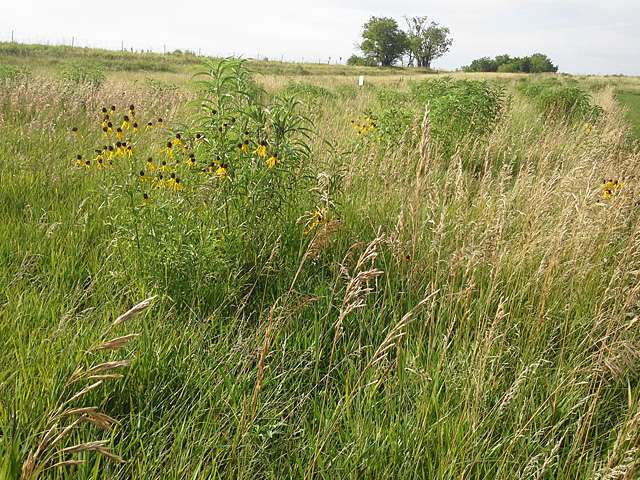ARS scientists found antibiotic-resistant bacteria occurring naturally in undisturbed Nebraska prairie soils. Credit: ARS
Since the 1940s, antibiotics have effectively treated certain bacterial diseases. But over the years, some bacteria have developed resistance to the antibiotics that once killed them.
Each year, about 2 million people in the United States are infected with bacteria that are resistant to antibiotics, according to the Centers for Disease Control and Prevention.
While antibiotic resistance is commonly viewed as a result of antibiotic overuse in humans and animals, this isn't always the case. Lisa Durso, a microbiologist at the Agricultural Research Service (ARS) Agroecosystem Management Research Unit in Lincoln, Nebraska, recently found antibiotic-resistant bacteria in prairie soils that had little or no exposure to human or animal activity.
Durso belongs to a nationwide network of ARS scientists investigating agriculture-related antibiotic resistance, sharing critical information, and developing solutions. Their research involves examining antibiotic resistance as it relates to food safety, animal production and protection, and the environment.
When it comes to resistance, scientists typically measure three things: drugs (antibiotics people take or give to animals), "bugs" (bacteria that might be resistant), and genes (DNA instructions in the bacteria that code for resistance). Genes are usually in the cells, though not always, Durso explains. After a cell dies, the genes can persist in the soil.
"Antibiotic-resistant bacteria and genes occur naturally," Durso adds. "Studies have shown antibiotic resistance in soil samples dating back to the time of woolly mammoths. This is because antibiotics, such as penicillin, came originally from fungi or other bacteria-found naturally in soil."
One obstacle to identifying the source of antibiotic resistance on farms and in the environment is measurement, according to Durso. Antibiotic-resistant bacteria and antibiotic-resistant genes found in soils where manure has been added (by animals or by spreading) provide valuable information on what is currently present in a sample site, such as a feedlot. A concern is that even if bacteria in manure are dead, their genes can persist in soils. If baseline levels of antibiotic resistance aren't collected, scientists will have a difficult time sorting out resistance caused by human antibiotic use from resistance that occurs naturally.
"To determine the impact of food-animal antibiotic use on resistance, it's essential that baseline levels of resistance be considered and subtracted out when measuring resistance in agroecosystems," Durso says.
To address this problem, Durso and her team examined native prairie soils that had little human impact and no animal grazing for the past 20 years. The team worked with a number of partners—including landowners, academia, and staff from state game and parks commissions—to identify 20 native prairies in southeast Nebraska meeting these criteria.
Soil samples were collected from the sites and screened for antibiotic-resistant bacteria. All the samples contained bacteria resistant to tetracycline and cefotaxime, and nearly half of the bacteria isolated from prairie soils were resistant to two or more antibiotics.
"We actually measured total soil DNA and isolated all of the DNA, which we believe mostly came from living cells," Durso says.
The findings also included a type of sulfonamide-resistant gene in 91 percent of the samples. Considered a marker of human activity, the gene was present despite a lack of human activity at those sites.
"Other research has suggested that sulfonamide resistance genes are associated with human activities and could be a base for measurement," Durso says. "However, our findings suggest that if we see sulfonamide genes in Nebraska feedlots, we cannot conclude that it is due to human activity, because we saw them in fairly high numbers in these prairies."
There is a great need to reduce antibiotic resistance in agricultural settings, Durso adds. One of the first things scientists need to determine is a realistic target for reduction-how low can they measure? These findings provide a basis for answering those questions and implementing a strategy to reduce antibiotic resistance in agricultural productions.
"It would be unrealistic to say we want zero antibiotic resistance on farms, because even in natural settings, you see resistance," Durso says. "We're able to use this data to set a baseline for what's occurring naturally. It gives us a starting point for figuring out how best to manage antibiotic resistance on agricultural lands."
This study was published in the Journal of Environmental Quality in March 2016.
Journal information: Journal of Environmental Quality
Provided by United States Department of Agriculture





















